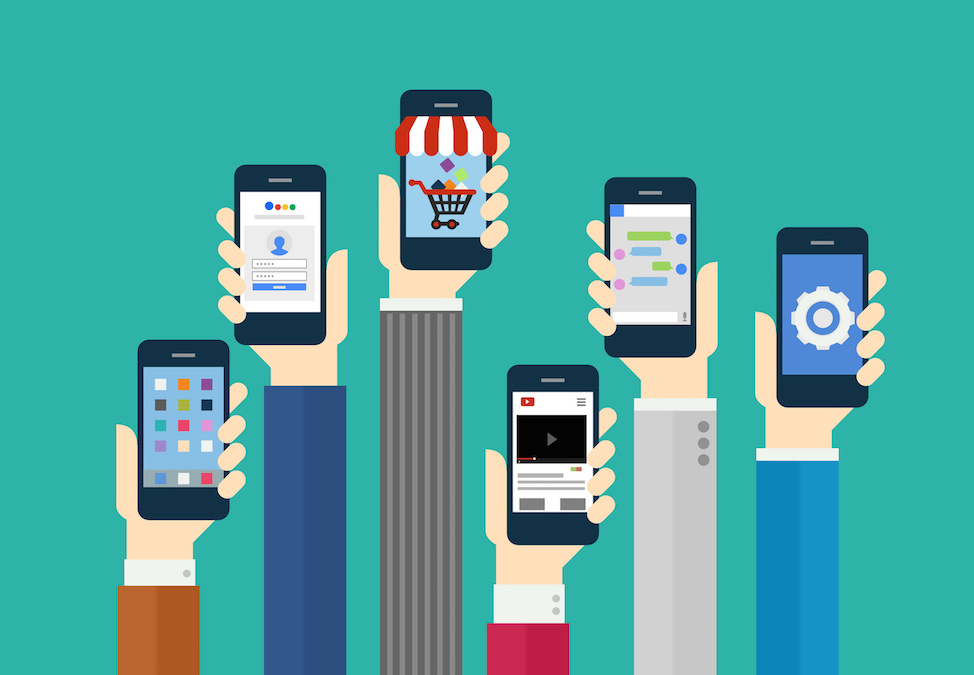5 Most Relevant Mobile Application Design Tips For 2017

When you design native mobile app UI there are several constraints and you have limited options to make your work shine through. The biggest constraint is the smaller screen size and lower attention span of the audience. You need to win over both of these and make the interface easy enough for new users and equally interesting for the older users. Here are 5 tips for Android and iPhone application company to be relevant for the better part of the 2017 and beyond.
It is the goal driven user interface that serves the users best. But how can you serve them right without really knowing about them? Yes, knowing your users is the first invincible step for any app designer. Question is, how can you know your users and have a solid grasp in the way they react and respond? Well, there are few time-tested and proven ways that have been developed over the years are worth taking a look.
First of all build user personas. What are they? Personas refer to basically fictional user characters that are built as per the commonly expected traits of your user behavior. Personas offer you insight on how the users are going to behave when using your app.
The second important thing is to understand user scenarios. These refer to typical app use cases where personas are supposed to react differently as per situations and the objectives they need to fulfill.
Experience maps is a way to go further deeper into the user scenarios. Every single interaction with the app can lead to several pathways and with experience map reveal all the possible actions users can take at every possible juncture of interaction. Experience map besides taking consideration of all the logical steps that users may take also considers the emotional reactions in different scenarios.
We all know small screen real estate of the mobile app requires deeper and rigorous consideration for spacing. In fact, often space alone defines the look and feel of any app. Space allows our eyes to rest on an on- screen object. Besides margins and padding, you need to offer a lot of white space around every object to attract attention easily. In this respect maintaining consistent width and length of padding and margins is also important. Negative space around each on -screen object allows easier viewing and interaction.
Colour offers a value is when it is used effectively with a specific intention or purpose. With different shades, you can insist a sense of priority and push the users to follow accordingly. For instance, a black button followed by a deep gray and a light gray will signify three levels of priority.
There are other effective ways to prioritize with colors. Customers in retail apps often react to bright CTA buttons faster than others. So, a button for ‘Buy’ or ‘Add to Cart’ should have a prominent color overtone. Another major consideration about the use of color is the cultural conventions in your target market. In China, bright yellow is often considered an auspicious color and the same goes for ‘Green’ in many Middle-East countries.
Your target OS guidelines should be taken into consideration when designing the UI. However innovative approach you have, it must adhere to the OS guidelines. Intuitive navigation combining touch, gestures and other types of interactions is important and this is why you need to choose the required features and stay clear of all that you do not need. Each app after being submitted goes through a rigorous scrutiny and test before being allowed to hit the app marketplace and naturally, you just cannot play ignorant and less considerate about platform-specific guidelines.
All through 2016 and to this day we have seen the majority of mobile apps taking microinteractions seriously to allow deeper interaction with apps and make the apps more pleasurable to use. It is quite normal for anyone among the app developers and designers to know a few thing about microinteractions. Well, microinteractions refer to tiny interactions that by offering feedback or by informing about something add value to the app use. They are remaining almost imperceptible or least noticed continue to add a value to the usability but over time become closely associated with the brand image of the app. For instance, we can name successful microinteractions in the digital world like the ‘Like’ function on Facebook.
Designing for the small screen real estate will continue to be cumbersome and involving this considering the overall hike in UI standard. When everyone is doing just the perfect thing you just cannot afford imperfection but to stand out above others you need to do more than just doing the right thing. You need to be innovative.
Author Bio
Nimblechapps is the coolest website development company and android game development company. Hire Top Rated Developers on Upwork from Nimblechapps.
